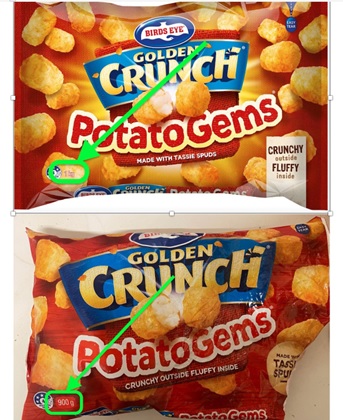Last April, I wrote about one of the things in life I love to hate – changing package sizes. My hackles were raised when I was shopping at Woolworths and noticed that 500g packets of Kellogg’s Nutri Grain had suddenly become 470g packets, although the size of the cardboard box itself remained the same.
This was not a new trick, of course. I cited other examples, including Woolworths’ own brand of crackers that had quietly dropped from 200g to 180g without a change in packaging size, and that iconic Australian spread, Vegemite.
One thing I did not know then was that this shifty little practice has a name – shrinkflation. I’d known the tactic had been in use for a while, but I was clearly not up to speed with how widespread it had become.
Read: Grocery shopping apps help navigate your local supermarket
Shrinkflation even has its own Wikipedia page, such is its pervasiveness around the Western world. The page lists a host of examples but, unsurprisingly, most are from the UK and the US.
I think it’s high time we ordinary Australians brought this underhanded tactic – the Wikipedia page uses the very apt term “reducing product value by ‘stealth’” to describe it – to the forefront of the national conscience.
Of course, my tongue is pushing the inside of my cheek here, but only slightly. As Australians, collectively and individually, there are greater challenges for us to overcome than a slight reduction in product package sizes.
What really annoys me, though, is that the big companies using these tactics are taking advantage of that very fact. I imagine the execs would quietly say something like: “Sure our customers might get annoyed if they happen to notice we’ve shrunk our sizes, but they’ll curse for a moment and move on.”
Read: How online retailers trick you into spending more
Well, I don’t think we should move on. I am appointing myself Australia’s ‘Guardian of the Grams’, the country’s ‘Litre Lookout’, our ‘Package Weight Watchdog’, the nation’s ‘Size Supervisor’, our …
Okay, I’ll stop there. You get the picture. The practice has continued since my ‘sermon’ of last year. In September, I noticed that one of my favourite dinner treats, Birds Eye Potato Gems, was the latest victim, reduced by 10 per cent to 900g. I used to portion these out in 250g lots. What am I supposed to do now?!

So, my 2023 resolution is to call out these instances whenever I spot them. And I’m hoping the YourLifeChoices community will join me in our metaphorical march to parliament – or to the ACCC (Australian Competition and Consumer Commission), at least.
The ACCC’s advertising and selling guide states: “It is illegal for a business to engage in conduct that misleads or deceives or is likely to mislead or deceive consumers or other businesses.”
Read: Six ways to be a smarter supermarket shopper
Is reducing the contents of a package without reducing the package size misleading? Of course it is.
My first task in this ‘crusade’ has been to write to the ACCC and ask for comment on this practice. That has been done. The second is to call on you, our loyal YourLifeChoices members, to alert us to any new instances of this sneaky little strategy.
Whenever you spot one, let me know by email at [email protected] and together we can defeat the scourge of shrinkflation!
Have you spotted a case of ‘shrinkflation’? What do you think of it as a tactic? Why not share your thoughts in the comments section below?

